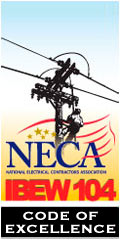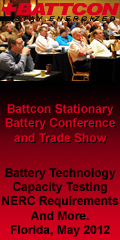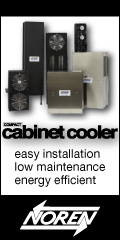NEPPA eNewsletter
February 2012
|
Last month we had an article on the Federal Motor Carrier Safety Administration (FMCSA) issuing a final rule prohibiting hand-held cell phone use while operating commercial vehicles. It went into effect on Jan. 12. Over the past several weeks I have been getting questions from members on this and I wanted to break it down further. The rule applies to drivers of commercial motor vehicles (CMVs) who hold a Commercial Driver’s License (CDL), except those who are employed by federal, state or local governments. This affects more members than our initial write up may have suggested. Since many of you require drivers to have CDLs, the trigger as I read it depends on your legal relationship with your local government. If you are considered part of your town or city’s government or, put another way, your employees would be considered employees of your local government, then you are exempt. But if you do not meet one of these tests or are a co-op, your CDL-licensed employees are prohibited from using handheld cell phones while operating commercial vehicles. With that said, let me answer the common questions I have received. What constitutes operating? What about hands-free operation? What if our cell phones are equipped with two-way radios, are they prohibited? Does this apply to other devices, like our two-way radios? What are the penalties? So, two important take-aways:
The information here should not be misconstrued as legal advice. Every month NEPPA produces information such as this for NEPPA E-Newsline. The good people at Morgan Meguire work very diligently to keep us up to date. To keep your group best informed, examine the monthly updates from Morgan Meguire by clicking on "legislative update" in the navigation bar at the top of the page. If you are interested in being more involved in NEPPA’s efforts to manage rules and regulations that impact you, consider joining our NEPPA Legislative Affairs Committee and joining us for the APPA rally in Washington, DC the week of March 12. ##SHARELINKS##
|
|
Longtime employee of Peabody Municipal Light Plant, Glenn Trueira, has been hired as plant manager following the retirement of former manager William Waters. Trueira has worked for the light plant for 26 years, both as the chief engineer and, for the last year and a half, as Water's assistant manager. In a huge vote of confidence, the Municipal Light Commission, which oversees the publicly owned plant, decided early on that if Trueira wanted the job, it was his. "We've watched Glenn in action now for years...and the only thing I ever worried about was whether he wanted the job," Commissioner Thomas D'Amato said. "With him, there was never a question of qualifications. I don't think we could have gotten a better guy." Trueira, 47, grew up in Peabody, went to Wallis and Welch schools and graduated from St. John's Prep in Danvers. He has a degree in electrical engineering from Worcester Polytechnic Institute and an MBA from Salem State University. Trueira started at PMLP when he was still a student at WPI. During his 26 years, he has held numerous positions, including electrical engineer, supervisor of electrical engineering and assistant manager. ##SHARELINKS##
|
|
South Hadley Electric Light Department is now offering residential customers substantial incentives to install solar photovoltaic (PV) and solar thermal energy projects at their homes. The unique package of incentives, the first of its kind in Massachusetts, is part of a new solar program adopted by SHELD to encourage local residents to consider solar energy installations. "Our program is unique because it offers incentives for both PV and thermal installations," said SHELD Manager Wayne Doerpholz. "We’re offering choices so our customers can choose the application that works best for them." Incentives are based on the size of the system installed. For PV projects, which create electricity from the sun’s energy, there is an incentive of $1.50 per watt, plus an additional $.50 per watt if the project uses equipment manufactured in Massachusetts, up to a maximum of $5,000. An average three-kilowatt system costs about $18,000. The program is limited to systems of 10 kilowatts or less. For solar thermal projects, which use the sun’s energy to heat water, the incentive is 25% of the project’s total cost, up to a maximum of $3,000. Thermal project incentives are only available to customers who currently have electric water heating. Typical solar thermal installations cost about $8,000 to $8,500. In addition, there are both state and federal tax incentives in place to help defray the cost of solar installations. Payback periods vary based on individual circumstances. Both types of projects have the potential to reduce electric bills. PV projects have the potential to earn additional credits for generating renewable energy. PV projects can also take advantage of SHELD net metering, which credits customers for their excess electricity. "Along with individual advantages and environmental benefits, solar installations in South Hadley can help hold down the town’s demand for expensive peak-use power, which helps hold down power costs for everyone," Doerpholz said. "We hope as many people as possible will consider solar." ##SHARELINKS##
|
|
A refunding bond issue closed yesterday by the Massachusetts Municipal Wholesale Electric Company (MMWEC) will save $16.8 million for 28 Massachusetts municipal utilities, strengthening their ability to secure stable and reliable power resources for the future. MMWEC has issued more than $4.7 billion in bonds since 1976 to finance and refinance its ownership interests in large New England power plants, including the Seabrook Station and Millstone Unit 3 nuclear units and the fossil-fueled Stony Brook plant in Ludlow. Bonds issued to finance Stony Brook and another unit were retired in 2008. The approximate $300 million in bonds currently outstanding, all of which will be retired by 2019, are associated with MMWEC's ownership in Seabrook and Millstone. The 2012 MMWEC bonds are rated A+ by Fitch Ratings and have A-level ratings from Standard & Poor's, all with a stable outlook. The underwriting team included Morgan Stanley, lead manager, and BMO Capital Markets. PFM Financial Management Inc. served as MMWEC's financial advisor with Nixon Peabody LLP acting as bond counsel. ##SHARELINKS##
|
|
Mistras Group is a full-service NDT testing & inspection company providing aerial lift, fire apparatus, ladder, bucket truck & dielectric testing. The firm also provides transformer inspection, testing & monitoring along with infrared, vibration, oil, acoustical, ultrasonic and condition monitoring services. Third-party acceptance testing, factory and on-site monitoring services including root cause analysis are also available. Mistras has offices in Auburn, Mass. and Granby and Waterford, Conn. Mike Devine can be reached by phone, (781) 733-4216 or email at mike.devine@mistrasgroup.com. His office is at 2 Millbury St., Auburn, Mass, 01501. Fax is 508-832-5557. Utility Service New England is an electrical utility contractor apparatus repair center located at 4 Coleman Ave., Westfield, Mass. 01085. Primary contact is David J. Miller, Jr., Senior Vice-President. He can be reached by phone at (413) 485-7177 or by email at david@utilityservicenewengland.com. Fax is (413) 485-7179. ##SHARELINKS##
|
##SHARELINKS##
|
|
The very basics of electrical safety are what OSHA considers the four requirements employees should meet to be considered a qualified employee. This article is based on Certified Utility Safety Professional Chuck Woodings' 18 years of experience developing and teaching OSHA 29 CFR 1910.269 classes. OSHA’s 29 CFR 1910.269(a)(2)(ii) standard states that qualified employees shall be trained and competent in: • The skills and techniques necessary to distinguish exposed live parts from other parts of electric equipment; • The skills and techniques necessary to determine the nominal voltage of exposed live parts; • The minimum approach distances specified in this section corresponding to the voltages to which the qualified employee will be exposed and • The proper use of the special precautionary techniques, personal protective equipment, insulating and shielding materials and insulated tools for working on or near exposed energized parts of electric equipment. These requirements are the basis for the entire spectrum of safety in this trade. Each one of these points builds on the previous one, and each rule is then built upon a complete understanding of the four points combined. Identifying energized surfaces is necessary to our work, but we can quickly get into trouble if we don’t understand what nominal voltage means. If one refers his work only to a phase-to-ground voltage like 7,200 or 14,400 volts, the PPE he uses can be totally wrong if he is working on a three-phase system. This may seem elementary to a utility lineworker, but when a contract crew is brought onto the property, it can mean the difference between working safely and being electrocuted. The Importance of "What Ifs" Knowing the nominal voltage affects the minimum approach distance (MAD) as well. Take the difference between a voltage of 14.4kV and 25kV – the difference in the MAD is 5 inches. This is a significant distance, especially when it comes to stringing new conductor and the placement of the travelers. It is important to ask yourself the "what ifs." What if the traveler moves on the arm because it wasn’t tightened enough? What if the wind is blowing and the conductors are swaying at different levels, which would be the case if they were different sizes? We would want all the clearance we could get and 5 inches could make a difference. Remember, most accidents don’t occur just because of one error, but because of several. Years ago, shortly after entering the trade, a foreman for our contracting utility was killed. They were running new conductor. On a rather tight corner, they had put up an angle block on the crossarm. They had adequate clearance and as they were starting up the pull, the foreman reached up to test the tension on the running ground. At that time the angle block slid, contact was made with the energized conductor and he was killed. It was a freak accident, but a situation where a little more clearance could have made a difference. Also, the fact that he wasn’t wearing rubber gloves was definitely a contributing factor. The selection of PPE is always based on the nominal voltage and not on the phase-to-ground voltage, unless the line spacing is such that a person working on the line is always in a phase-to-ground situation. Not as Simple as They Seem These four points identifying the requirements of a qualified employee may seem simple for one procedure. However, when you consider the many operations that a journeyman lineworker must learn, it is easy to understand why an apprentice must work 6,000 to 8,000 hours to become a journeyman. Once the apprentice understands the importance of these four points, he is well on his way to having a safe career. After being responsible for apprentice lineworkers and apprentice wireworkers for the last 15 years, I want to emphasize the importance of these four points, especially to people in the safety field. In teaching 29 CFR 1910.269 classes since the inception of the regulation, I have found that when you say "nominal voltage," most people don’t know what you’re talking about. Perhaps OSHA could have phrased it differently so it would be easier to understand, but they didn’t. For the safety of new people entering the field, we have to teach them what nominal voltage means and its relationship to the other three qualification requirements. About the author: Chuck Woodings has worked in the electric utility trade since 1964 and has been a safety instructor and safety and training director for the last 20 years. As a job training and safety instructor, he helped develop a 29 CFR 1910.269 training program used to train employees of more than 100 utilities on the West Coast. Woodings worked all around the country throughout his career, finally settling in Boise, Idaho in 1997. He became a Certified Utility Safety Professional in May 2011. ##SHARELINKS##
|
|
Training. It’s something many utilities embrace for new employees, but perhaps something that falls to the bottom of the to-do list for long-time personnel. Why is it important to your organization? Providing training opportunities to all personnel is a great investment for your utility. Aside from brushing up on core job skills, training can often spark renewed interest and company loyalty among those trained. Employees who receive regular training understand that your utility is making an investment in their future with the organization. This positive feeling can translate to improved productivity, greater care in the quality of work produced, increased safety and fewer mistakes. This saves your organization money in the long run. For linemen and other field workers, regular training is part of the certification process. Because utilities invest so much time and money into training electric operations personnel, utilities sometimes forget that all employee groups benefit from regular training opportunities. Office personnel, management and other staff training can help bring new ideas and management techniques into the organization and boost performance and loyalty. NEPPA recognizes a need for increased training opportunities for all types of utility personnel, and is working to expand the opportunities available to member utilities. New Executive Director Larry Brownell will be reaching out to NEPPA members over the next couple of months to find out more about each utility’s unique training needs. This effort will help NEPPA and the Training Committee develop programs that present real value and opportunity to members. Please be sure to share your thoughts on training with Larry to help us create a more robust and effective training portfolio in 2012. Jackie Pratt is the marketing & customer care manager at Shrewsbury Electric & Cable Operations and a member of the NEPPA training committee. We welcome articles of interest from our members.##SHARELINKS##
|



